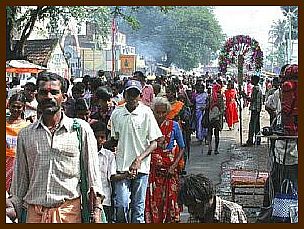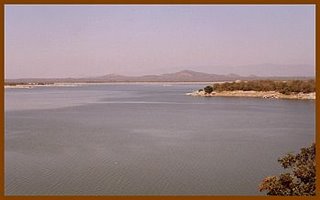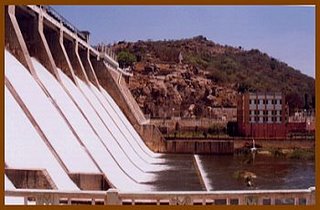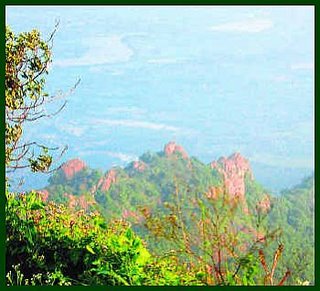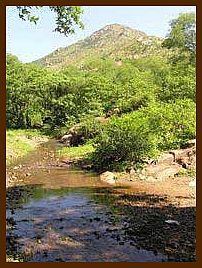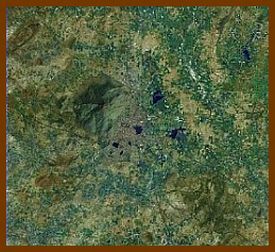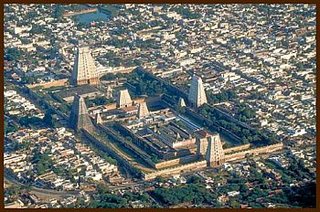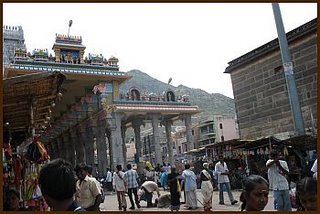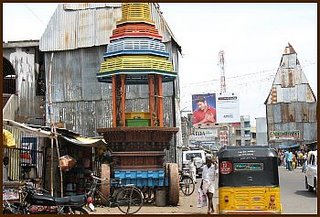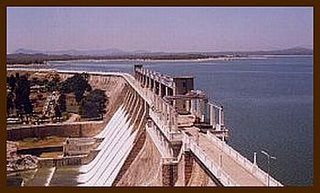This morning had an appointment at the Rangammal Hospital Athiyandal Village and instead of going home by autorickshaw decided instead to walk. As I had my camera with me took some snaps of everyday things here at Tiruvannamalai that normally one would hardly notice. But for people not familiar with this area, and those who have never visited India, I think that these photographs will be very interesting.
The street in front of the hospital is a country lane that northwards connects with the NH66 to Bangalore and southwards to the Arunachala Samudra reservoir lake. On the side of the roads are the usual shrines, altars and small Temples you will see all over India. Here is a small anthill that someone has started to maintain and worship.
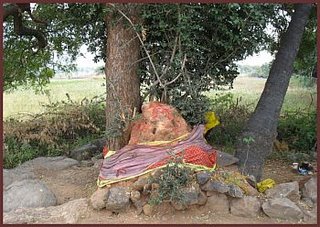
On the other side of the lane and just a few yards away, a small shrine dedicated to the Divine Mother. Whereas in North India, the aspects of Durga and Kali are revered, here in Tamil Nadu and at Tiruvannamalai, a Mother Deity loved and venerated is Karumariamman.
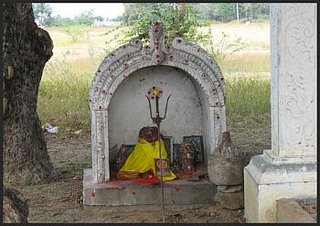
Approximately 70% of the population of Tiruvannamalai District is Hindu that means the remaining 30% is comprised of predominantly Muslim and Christian and a scattering of other faiths. There are many Mosques and Churches all through the area. This particular church in the below photograph, is very small and probably started to service the many Christians that either work at the Hospital or are visiting it.
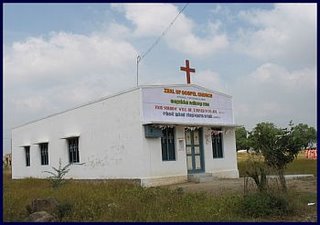
Below, these ladies in their lovely salmon coloured saris are connected with the Shantimalai Trust and are on their way to attend a meeting of this organisaton. The Shanthimalai Research & Development Trust has done more than any other single organisation in helping the financial development of the people of this area. I expect to be posting alot of information about the extraordinary man who started this Trust, a Mr. Hugo Maier from Switzerland and of the diverse and excellent work the Trust engages in that helps so much in the upliftment of many people in this community.
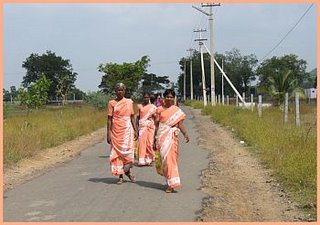
So I turned off the country land and took a shortcut through some fields. Fields which sadly are currently being sold as small plots for development. So in a few years this particular area will doubtedlessly be a hodge-podge of all sorts of buildings; both residental and business. Right now its lovely just wandering through and being able to enjoy such a magnificent view of Arunachala.
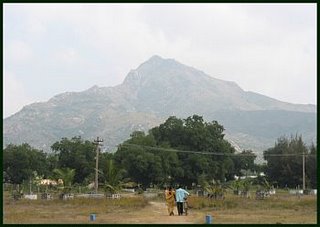
Now I've cut through the field and I am walking by the side of the NH66. The Highway is shared by great lumbering trucks on their way to Bangalore and beyond and also local and more traditional forms of transport; like this ox and cart. You can see the ox's horns have been painted in the colours of the Indian Flag.
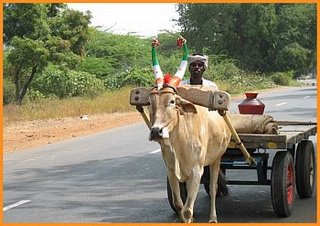
In previous posts I often talk about 'encroachments'. This word is used to describe the unauthorised and illegal construction of buildings on Poramboke land. Land is usually considered to be Patta; which means one's own personal land, or Poramboke; which means it belongs to the Government.

Two ladies who live in the encroachment settlement are sitting on the edge of the Highway having a nice chat. They are continuing a tradition from Indian village life; sitting and talking outside their home. In this case it doesn't seem to make too much difference that just a few feet away buses, trucks and vans are hurtling along on a busy Highway.
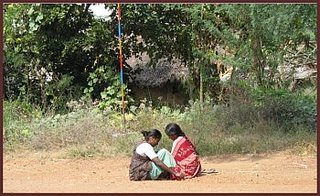
I'm on the last part of my journey and again taking another shortcut through some agricultural fields and from this vantage point can see in the foreground a sea of growing rice with Arunachala, the silent Sentinel, in the background.
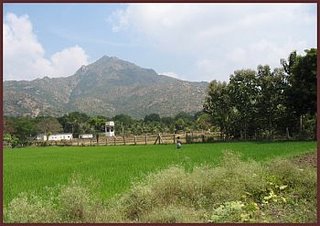
Nearly home and a well deserved cup of tea!













